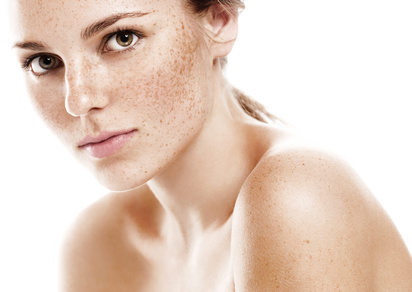
Hyperpigmentation is always a concern in Asian people. There are many kinds of hyperpigmentation on the face, including freckles, solar lentigines, melasma, Nevus of Ota, acquired bilateral nevus of Ota-like macules (ABNOM), cosmetic tattoos, and other hyperpigmentation.
Lentigines intermingled with freckles and other pigmented disorders, such as melasma and ABNOM or nevus zygomaticus, are common in Asian women. Each has different mechanism and pathological presentation. The treatment for each disease is also different. Some may be responsive to topical bleaching agents, like hydroquinone or Kligman’s triple combination formula (5% hydroquinone, 0.1% tretinoin, and 0.1% dexamethasone), while others may be good candidates for light based therapy, like Intense pulsed light (IPL) or lasers. The treatment plan highly depends on the physicians’ experiences and techniques.
Various lasers had been introduce to the Taiwan market, including Q-switched Nd-YAG laser, Q-switched alexandrite laser, Q-switched ruby laser, and even pico laser recently. In this article, we will describe the spectrum of pigments treatment in Taiwan. The physicians need to be familiar to various laser devices to achieve better results on different pigment lesions.
Freckles and Lentigines
Freckles and lentigines are common cutaneous pigmented lesions in Asians with similar clinical manifestations. Many therapies have been advocated over the past decades. Dr. Yung-Tsai Li et al. compared the Q-switched Nd-YAG laser with the traditional 35% trichloroacetic acid for the treatment of lentigines. They found a better result of Q-switched Nd-YAG laser (532nm, 2-mm spot size, 2.4-2.6 J/cm2) after one treatment.
HELIOSⅡ/LOTUSⅡ/HYPERION – Manufacturer: LASEROPTEK(www.laseroptek.com)
Later, Q-switched pigmented lasers and IPL became very popular worldwide, and have been the main treatment modalities for pigmented lesions in Taiwan during recent years. According to Dr Chia-Chen Wang et al., they performed a split-face study on the effect of Q-switched alexandrite laser in one session and IPL in two sessions for the treatment of freckles and lentigines. Their study revealed Q-switched alexandrite laser (755 nm, 50 nsec, 3-mm spot size, 6.5-7.5 J/cm2) was superior to IPL (560-1200 nm, double mode, pulse width: 3.2/6.0 msec, intervals: 40 msec, fluencies of 26-30 J/cm2 for session one and 28-32 J/cm2 for session two) when treating freckles, but IPL should be used for lentigines.
However, another study by Dr. Yau-Li Huang et al. investigated on the effect of IPL for the treatment of facial freckles in Asian skin. They used cutoff filters of 550–590 nm, with fluences of 25–35 J/cm2, single or double-pulse mode with pulse intervals of 20.0 or 40.0 msec, and a pulse width of 4.0 msec to treat (4-week intervals, 1-3 sessions). Nearly ninety percent of the subjects showed excellent or good results, with similar percentage of patients’ satisfaction.
Therefore, it seems either IPL or Q-switched lasers can have similar results when treating freckles or lentigines as long as suitable parameters are chosen.
-To be continued





















